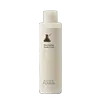What's inside
What's inside
 Key Ingredients
Key Ingredients

 Benefits
Benefits

 Ingredients Side-by-side
Ingredients Side-by-side

Zea Mays Starch
AbsorbentSodium Cocoyl Isethionate
CleansingSodium Lauroyl Glutamate
Sodium Lauroyl Aspartate
CleansingSodium Cocoyl Glycinate
CleansingCamellia Sinensis Leaf Powder
ExfoliatingSolanum Lycopersicum Fruit
EmollientTrehalose
HumectantAllantoin
Skin ConditioningMaltodextrin
AbsorbentWater
Skin ConditioningPapain
Skin ConditioningGlucose
HumectantBromelain
Skin ConditioningGluconolactone
Skin ConditioningGlyceryl Glucoside
HumectantSodium Hyaluronate Crosspolymer
Humectant1,2-Hexanediol
Skin ConditioningSodium Hyaluronate
HumectantHydrolyzed Hyaluronic Acid
HumectantGlycerin
HumectantHydrolyzed Glycosaminoglycans
HumectantHyaluronic Acid
HumectantGlycosphingolipids
EmollientCeramide NP
Skin ConditioningPueraria Lobata Root Extract
HumectantPinus Palustris Leaf Extract
TonicUlmus Davidiana Root Extract
Skin ConditioningOenothera Biennis Flower Extract
AstringentBenzyl Glycol
SolventEthylhexylglycerin
Skin ConditioningHydrogenated Lecithin
EmulsifyingRaspberry Ketone
MaskingButylene Glycol
HumectantPropanediol
SolventZea Mays Starch, Sodium Cocoyl Isethionate, Sodium Lauroyl Glutamate, Sodium Lauroyl Aspartate, Sodium Cocoyl Glycinate, Camellia Sinensis Leaf Powder, Solanum Lycopersicum Fruit, Trehalose, Allantoin, Maltodextrin, Water, Papain, Glucose, Bromelain, Gluconolactone, Glyceryl Glucoside, Sodium Hyaluronate Crosspolymer, 1,2-Hexanediol, Sodium Hyaluronate, Hydrolyzed Hyaluronic Acid, Glycerin, Hydrolyzed Glycosaminoglycans, Hyaluronic Acid, Glycosphingolipids, Ceramide NP, Pueraria Lobata Root Extract, Pinus Palustris Leaf Extract, Ulmus Davidiana Root Extract, Oenothera Biennis Flower Extract, Benzyl Glycol, Ethylhexylglycerin, Hydrogenated Lecithin, Raspberry Ketone, Butylene Glycol, Propanediol
Oryza Sativa Extract
AbsorbentWater
Skin ConditioningGlycerin
HumectantButylene Glycol
HumectantNiacinamide
SmoothingPentylene Glycol
Skin ConditioningCentella Asiatica Extract
CleansingFicus Carica Fruit Extract
HumectantAvena Sativa Kernel Extract
AbrasiveCynara Scolymus Leaf Extract
Skin ConditioningHydrogenated Lecithin
EmulsifyingCamellia Sinensis Leaf Water
MaskingDiphenyl Dimethicone
EmollientTriethylhexanoin
Masking1,2-Hexanediol
Skin ConditioningPolyglyceryl-10 Oleate
Skin ConditioningMethylpropanediol
SolventSodium Citrate
BufferingEthylhexylglycerin
Skin ConditioningHydroxyacetophenone
AntioxidantCitric Acid
BufferingDisodium EDTA
Polyquaternium-51
Skin ConditioningBeta-Glucan
Skin ConditioningHydrolyzed Rice Protein
Skin ConditioningCeramide NP
Skin ConditioningMannitol
HumectantBromelain
Skin ConditioningPapain
Skin ConditioningOryza Sativa Extract, Water, Glycerin, Butylene Glycol, Niacinamide, Pentylene Glycol, Centella Asiatica Extract, Ficus Carica Fruit Extract, Avena Sativa Kernel Extract, Cynara Scolymus Leaf Extract, Hydrogenated Lecithin, Camellia Sinensis Leaf Water, Diphenyl Dimethicone, Triethylhexanoin, 1,2-Hexanediol, Polyglyceryl-10 Oleate, Methylpropanediol, Sodium Citrate, Ethylhexylglycerin, Hydroxyacetophenone, Citric Acid, Disodium EDTA, Polyquaternium-51, Beta-Glucan, Hydrolyzed Rice Protein, Ceramide NP, Mannitol, Bromelain, Papain
 Reviews
Reviews

Ingredients Explained
These ingredients are found in both products.
Ingredients higher up in an ingredient list are typically present in a larger amount.
1,2-Hexanediol is a synthetic liquid and another multi-functional powerhouse.
It is a:
- Humectant, drawing moisture into the skin
- Emollient, helping to soften skin
- Solvent, dispersing and stabilizing formulas
- Preservative booster, enhancing the antimicrobial activity of other preservatives
We don't have a description for Bromelain yet.
Butylene Glycol (or BG) is used within cosmetic products for a few different reasons:
Overall, Butylene Glycol is a safe and well-rounded ingredient that works well with other ingredients.
Though this ingredient works well with most skin types, some people with sensitive skin may experience a reaction such as allergic rashes, closed comedones, or itchiness.
Learn more about Butylene GlycolCeramide NP is a type of ceramide and formally known as ceramide 3.
Ceramides are intercellular lipids naturally found in our skin that bonds dead skin cells together to create a barrier. They are known for their ability to hold water and thus are a great ingredient for dry skin.
Ceramides are an important building block for our skin barrier. A stronger barrier helps the skin look more firm and hydrated. By bolstering the skin ceramides act as a barrier against irritating ingredients. This can help with inflammation as well.
If you would like to eat ceramides, sweet potatoes contain a small amount.
Read more about other common types of ceramides here:
Ceramide AP
Ceramide EOP
Ethylhexylglycerin (we can't pronounce this either) is commonly used as a preservative and skin softener. It is derived from glyceryl.
You might see Ethylhexylglycerin often paired with other preservatives such as phenoxyethanol. Ethylhexylglycerin has been found to increase the effectiveness of these other preservatives.
Glycerin is already naturally found in your skin. It helps moisturize and protect your skin.
A study from 2016 found glycerin to be more effective as a humectant than AHAs and hyaluronic acid.
As a humectant, it helps the skin stay hydrated by pulling moisture to your skin. The low molecular weight of glycerin allows it to pull moisture into the deeper layers of your skin.
Hydrated skin improves your skin barrier; Your skin barrier helps protect against irritants and bacteria.
Glycerin has also been found to have antimicrobial and antiviral properties. Due to these properties, glycerin is often used in wound and burn treatments.
In cosmetics, glycerin is usually derived from plants such as soybean or palm. However, it can also be sourced from animals, such as tallow or animal fat.
This ingredient is organic, colorless, odorless, and non-toxic.
Glycerin is the name for this ingredient in American English. British English uses Glycerol/Glycerine.
Learn more about GlycerinHydrogenated Lecithin is created from the hydrogenation of lecithin (a group of phospholipids). Hydrogenation is a chemical reaction between hydrogen and another element.
This ingredient is an emollient and emulsifier. As an emollient, it helps soften skin by trapping moisture within. As an emulsifier, it prevents oil and water ingredients from separating.
Papain is an enzyme found naturally in the papaya plant's leaves, fruit, and roots. It has antimicrobial, soothing, and wound healing properties.
Glycine and Vitamin A are naturally found in papain.
While papain is often touted as skin-lightening, further studies are needed to prove this. However, papain has been shown to help soothe acne-inflammation.
Papain belongs to a class of enzymes called proteolytic enzymes. These enzymes break down peptides and amino acids.
Some studies found papain to be a potential skin sensitizer and allergen. Those with latex allergies might also be allergic to papaya.
Learn more about PapainWater. It's the most common cosmetic ingredient of all. You'll usually see it at the top of ingredient lists, meaning that it makes up the largest part of the product.
So why is it so popular? Water most often acts as a solvent - this means that it helps dissolve other ingredients into the formulation.
You'll also recognize water as that liquid we all need to stay alive. If you see this, drink a glass of water. Stay hydrated!
Learn more about Water